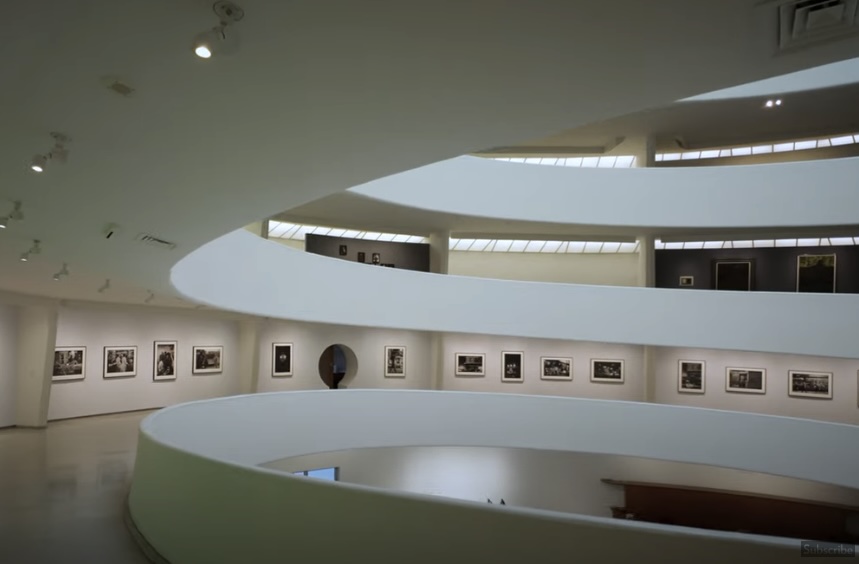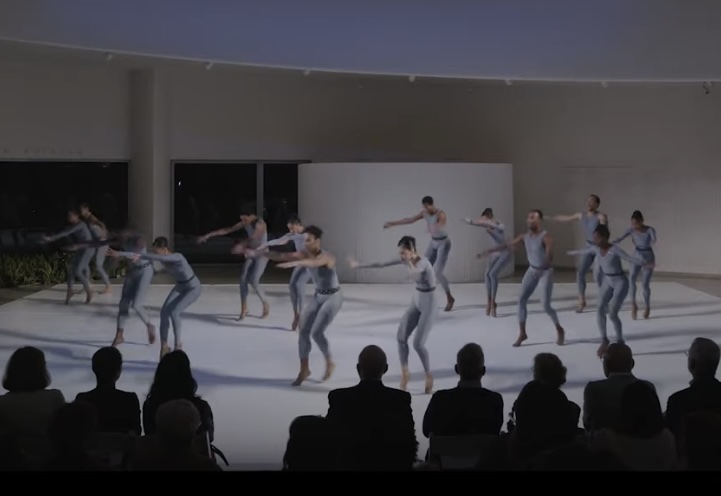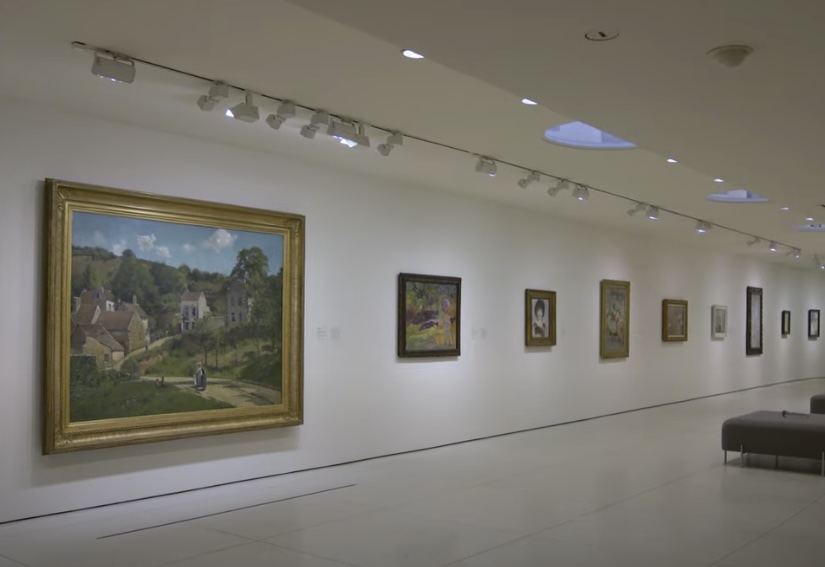The Guggenheim Museum is not just a museum; it’s a landmark, a symbol of modern art and architectural genius. Nestled in the heart of New York City, the Guggenheim Museum stands out as a masterpiece of 20th-century architecture. Designed by the renowned architect Frank Lloyd Wright, the museum’s unique spiral structure and avant-garde design have made it an iconic feature of the city’s landscape.
The Architectural Splendor of the Guggenheim Museum

The Guggenheim Museum, located in New York City, is renowned worldwide for its extraordinary architectural design and its significance in the world of contemporary art. Designed by the iconic architect Frank Lloyd Wright, the museum stands as a testament to innovative design and a harmonious fusion of art and architecture. Let’s delve into the architectural splendor of the Guggenheim Museum, exploring its exterior and interior features that make it a visual delight and a cultural landmark.
Exterior Design
The exterior of the Guggenheim Museum is a breathtaking sight to behold. Frank Lloyd Wright’s design is characterized by its flowing spiral form, which gives the building the appearance of a white ribbon gracefully curling into the sky. This unique architectural feature sets it apart from conventional museums and captivates visitors from the moment they lay eyes on it.
Key Characteristics of the Exterior:
- Spiral Ramp: The most distinctive aspect of the Guggenheim’s exterior is the continuous, spiraling ramp that encircles the building. This ramp serves both aesthetic and functional purposes, allowing visitors to ascend gradually while providing an intriguing perspective of the structure itself.
- Smooth Curves: The absence of sharp angles or corners in the building’s design contributes to its organic and fluid appearance. This was a departure from the geometric rigidity seen in many architectural styles of the time.
- White Facade: The exterior is clad in a pristine white finish, which not only adds to the elegance of the design but also enhances the building’s ability to reflect and play with natural light.
- Integration with the Environment: The Guggenheim Museum harmoniously integrates with its surroundings, as it is nestled amidst the city’s urban fabric while maintaining its distinctive identity.
Interior Design
Once inside the Guggenheim Museum, visitors are greeted with an equally captivating interior that seamlessly blends with the exterior design. Frank Lloyd Wright’s vision extended beyond the façade and into the interior spaces, creating an environment that enhances the art viewing experience.
Key Characteristics of the Interior:
- The Rotunda: Often referred to as the heart of the Guggenheim, the Rotunda is the central space within the museum. It features a continuous, spiraling gallery that ascends alongside the exterior ramp. The open design of the Rotunda allows for unobstructed views of the artworks on display while providing a sense of interconnectedness between different levels.
- Exhibition Spaces: As visitors ascend the spiral ramp, each level houses different exhibits. This arrangement is not only visually stimulating but also encourages a natural flow of foot traffic, making it easy for visitors to explore the entire museum. The integration of art and architecture is exemplified as artworks seem to merge seamlessly with the structure itself.
- The Skylight: At the pinnacle of the Guggenheim Museum, a large skylight bathes the interior with natural light. This clever use of light not only illuminates the artworks but also creates a dynamic interplay of light and shadow within the Rotunda. The skylight adds to the overall ambiance of the museum, offering a sense of openness and connection to the outside world.
Exhibitions and Collections at the Guggenheim Museum

The Guggenheim Museum, located in New York City, boasts a rich and extensive collection of modern and contemporary art, making it a world-renowned cultural institution. This article delves into the exhibitions and collections that define the museum’s artistic significance, from its permanent collection to the captivating special exhibitions that continuously attract art enthusiasts from around the globe.
Permanent Collection
The Guggenheim Museum’s permanent collection serves as a testament to the evolution of modern and contemporary art over the decades. It features an impressive array of artworks, spanning from the late 19th century to the present day, with masterpieces by renowned artists such as Picasso, Kandinsky, Chagall, and many more. Here is a glimpse of what the permanent collection encompasses:
- Pablo Picasso: The museum houses several iconic pieces by Picasso, including his groundbreaking work “Les Demoiselles d’Avignon.” This masterpiece is a pivotal example of Cubism, a revolutionary art movement that redefined how we perceive and represent reality.
- Wassily Kandinsky: Kandinsky, a pioneer of abstract art, is well-represented in the Guggenheim’s collection. His vibrant and geometric compositions, like “Composition 8” and “Yellow-Red-Blue,” are iconic examples of the abstract art movement.
- Marc Chagall: Chagall’s dreamlike and poetic paintings, such as “I and the Village,” are a highlight of the collection. His unique blend of folkloric and abstract elements creates a whimsical and emotional experience for viewers.
- Modern Sculpture: Beyond paintings, the Guggenheim also boasts a significant collection of modern sculptures, featuring works by artists like Constantin Brâncuși and Alberto Giacometti. These sculptures offer a three-dimensional exploration of artistic innovation.
Special Exhibitions
One of the hallmarks of the Guggenheim Museum is its commitment to hosting special exhibitions that offer fresh perspectives on art. These exhibitions are dynamic and ever-changing, presenting a diverse range of art forms, styles, and artists. They often become the focal point of the art world, drawing in visitors from across the globe. Here is a look at the significance of these special exhibitions:
- Diverse Art Forms: The Guggenheim’s special exhibitions encompass a wide variety of art forms, including but not limited to painting, sculpture, photography, video installations, and performance art. This diversity ensures that there is something for every art enthusiast to appreciate.
- Contemporary Relevance: Special exhibitions often focus on contemporary artists and their works, providing insight into the current artistic landscape and the social, political, and cultural issues that artists engage with today.
- Global Impact: These exhibitions frequently feature artists from around the world, showcasing the global reach and influence of contemporary art. They encourage dialogue and cultural exchange among visitors.
- Educational Programs: In conjunction with special exhibitions, the Guggenheim Museum offers educational programs, including lectures, workshops, and guided tours, enriching the visitor’s experience and fostering a deeper understanding of the art on display.
Visitor Experience at the Guggenheim Museum
Visiting the Guggenheim Museum is a unique experience. As you meander up the spiral walkway, you encounter a chronological display of artworks. This layout allows for a natural progression through different art periods and styles.
Chronological Display of Artworks
Upon entering the Guggenheim Museum, visitors are greeted with a truly distinctive layout that adds depth and context to the art on display. The central feature of this layout is the continuous spiral walkway that ascends through the museum’s levels. Here’s how this layout enhances the visitor experience:
- Natural Progression: The spiral layout allows for a natural and chronological progression through different art periods and styles. As you ascend, you journey through the history of modern and contemporary art, starting with earlier works and gradually transitioning to more recent creations. This progression provides valuable insight into the evolution of artistic movements and individual artists’ contributions.
- Uninterrupted Views: The open design of the museum’s interior ensures that visitors have uninterrupted views of the artworks on display. There are no walls or partitions to obstruct your line of sight, allowing you to fully immerse yourself in the art and appreciate it from various angles.
- Interactive Exploration: Visitors have the freedom to explore at their own pace. Whether you choose to linger in front of a particular artwork or move swiftly through the levels, the spiral layout accommodates diverse preferences, making each visit a personalized artistic journey.
Amenities
The Guggenheim Museum understands the importance of visitor comfort and convenience. To enhance your overall experience, the museum offers several amenities:
- Café: Located within the museum, the café provides a welcoming space for visitors to relax, recharge, and savor refreshments. Whether you desire a light snack, a coffee, or a leisurely meal, the café offers a pleasant respite amidst the artistic exploration.
- Shop: The museum’s shop is a treasure trove of souvenirs, books, and art-related items. It allows visitors to take a piece of the Guggenheim’s artistry home with them. From postcards featuring famous artworks to beautifully crafted sculptures, the shop offers a diverse range of keepsakes to commemorate your visit.
Accessibility
The Guggenheim Museum is committed to ensuring that art is accessible to all visitors. To accommodate diverse needs, the museum provides a range of accessibility features:
- Ramps: Throughout the museum, ramps are strategically placed to facilitate easy access for visitors with mobility aids, strollers, or those who prefer not to use stairs. This thoughtful design ensures that everyone can explore the museum comfortably.
- Elevators: Elevators are available for vertical movement within the museum, making it accessible to all levels. This ensures that all visitors can fully experience the entire collection, regardless of their mobility.
- Wheelchair Availability: The Guggenheim Museum offers wheelchairs for visitors who may require them. These wheelchairs are available on a first-come, first-served basis, providing additional assistance to those who need it.
Planning Your Visit
To ensure that your visit to the Guggenheim Museum is a memorable and enriching experience, proper planning is key. Here are some essential tips to help you make the most of your visit:
| Step | Details |
| Check the Website | Before heading to the museum, it’s highly advisable to visit the official Guggenheim Museum website. Here, you can find up-to-date information on current exhibitions, opening hours, and ticket prices. The website is a valuable resource to ensure your visit aligns with your interests and schedule. |
| Exhibition Information | Take some time to explore the details of the current exhibitions. The Guggenheim regularly hosts special exhibitions that showcase a diverse range of art forms and styles. Knowing what’s on display can help you plan your visit around specific artists or themes that pique your interest. |
| Opening Hours | Familiarize yourself with the museum’s opening hours. These hours can vary depending on the day of the week, so it’s essential to plan your visit accordingly. Whether you prefer a morning visit or an afternoon excursion, knowing the opening hours will help you schedule your trip effectively. |
| Ticket Prices | The website provides information on ticket prices, including any discounts or special rates for students, seniors, and members. Purchasing tickets online in advance can save you time and ensure availability, especially during peak visitation times. |
| Special Events and Programs | Keep an eye out for any special events, lectures, or programs that may be taking place during your visit. These events can provide additional insights and perspectives on the artworks on display, enhancing your overall museum experience. |
The Impact of the Guggenheim Museum on Art and Culture
The Guggenheim Museum holds a profound influence on the world of art and culture. Its distinctive approach to exhibition layout and unwavering commitment to showcasing innovative art forms have solidified its status as a significant cultural institution. Here’s how the Guggenheim has left an indelible mark on the art world:
- Revolutionary Exhibition Layout: The Guggenheim’s spiral design, devised by architect Frank Lloyd Wright, represents a departure from traditional museum layouts. It encourages a fluid, chronological journey through different art periods and styles, fostering a unique and immersive art-viewing experience.
- Fostering Innovation: The museum has been at the forefront of championing avant-garde and experimental art forms. It has consistently pushed boundaries, encouraging artists to explore new mediums and ideas. This commitment to innovation has contributed to the evolution of modern and contemporary art.
- Global Impact: The Guggenheim’s influence extends globally. With branches in various cities, including Bilbao, Venice, and Abu Dhabi, the museum’s model of engaging with contemporary art and architecture has been replicated worldwide. It has sparked cultural dialogues and inspired the development of other iconic art institutions.
Educational Programs at the Guggenheim Museum
The Guggenheim Museum is dedicated to fostering a deeper understanding of art and inspiring creativity in visitors of all ages. To achieve this goal, the museum offers a wide range of educational programs and workshops. Here’s a glimpse of what these programs entail:
- Diverse Offerings: Educational programs at the Guggenheim cater to diverse audiences, from children to adults. They include guided tours, art-making workshops, lectures, and discussions. These offerings encourage active engagement with art and provide valuable learning opportunities.
- Art and Creativity: Participants in these programs have the chance to explore their own creativity and gain insights into the artistic process. Whether you are a seasoned artist or a novice, the educational programs offer a space to develop your artistic skills and appreciation.
- Enhanced Understanding: Educational programs often complement the museum’s exhibitions, providing context and deeper insights into the artworks on display. They encourage critical thinking and facilitate meaningful connections between visitors and the art.
Conclusion
The Guggenheim Museum is more than just a museum; it’s an experience, a journey through the evolution of modern and contemporary art. Its unique architecture and innovative approach to art display make it a must-visit destination for art lovers and tourists alike. The Guggenheim Museum continues to inspire and intrigue visitors, firmly holding its place as a beacon of art and culture in New York City.
FAQ
What are the opening hours of the Guggenheim Museum?
The Guggenheim Museum’s opening hours vary, so it’s best to check their website for the most current information.
Can I take photographs inside the Guggenheim Museum?
Photography is allowed in certain areas of the museum, but restrictions apply to special exhibitions and certain artworks.
Is the Guggenheim Museum wheelchair accessible?
Yes, the museum is accessible to wheelchair users and offers wheelchairs for rent.
Are there guided tours available at the Guggenheim Museum?
Yes, the museum offers a variety of guided tours that provide deeper insights into the collections and exhibitions.
What is the best way to get to the Guggenheim Museum?
The museum is accessible by various means of public transportation, including buses and subways. Detailed directions can be found on their website.
